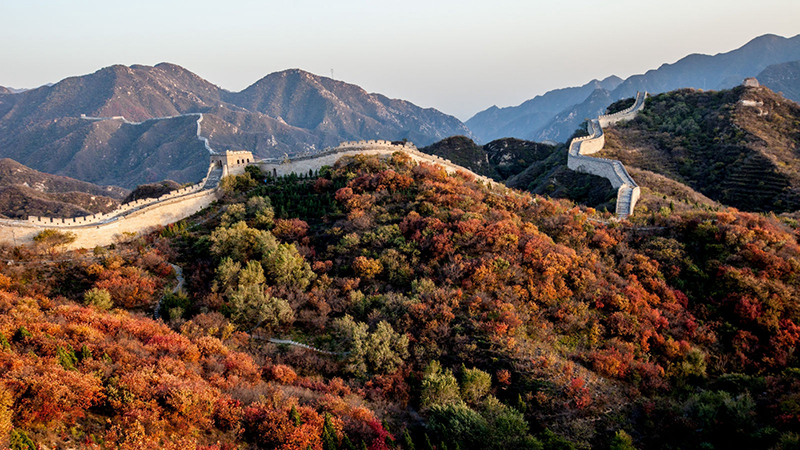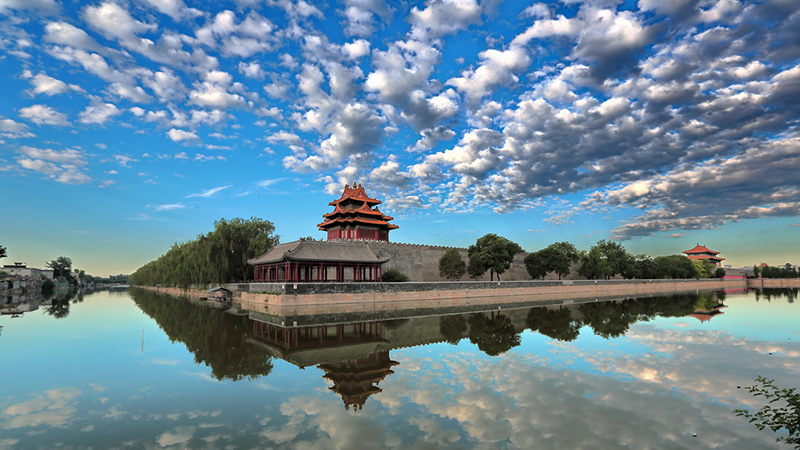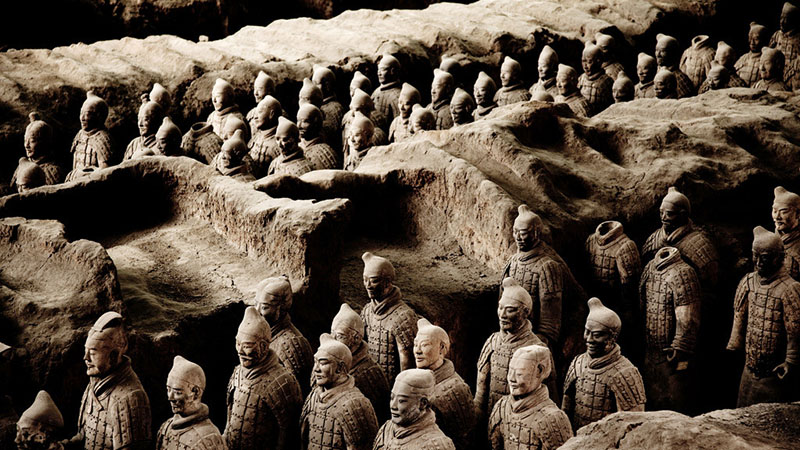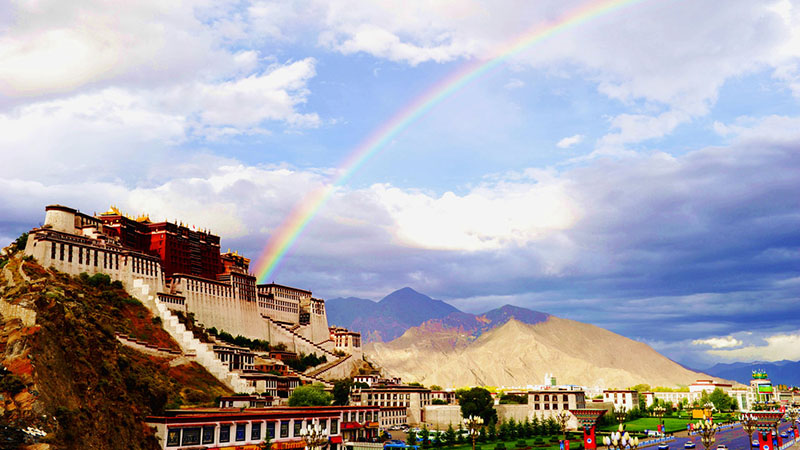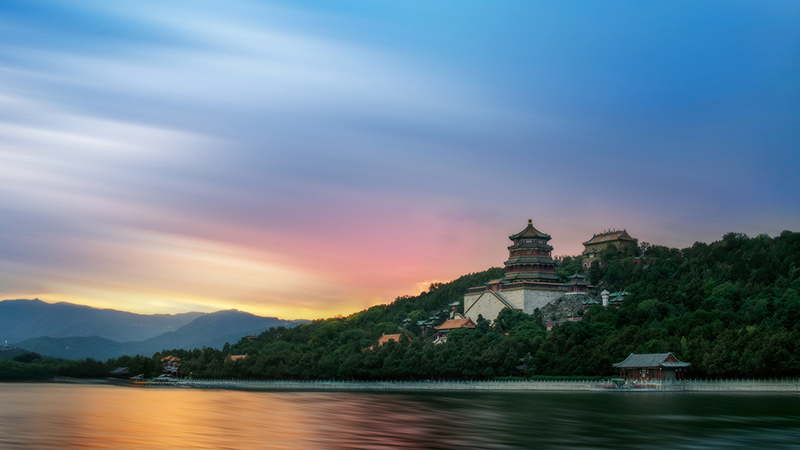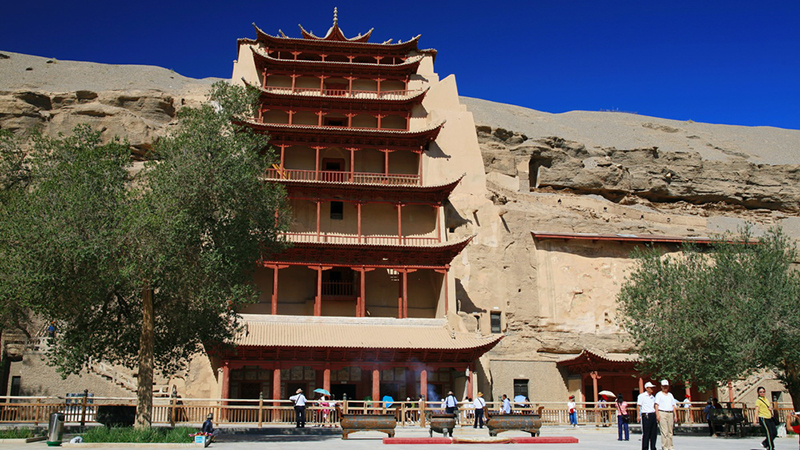China, with a history of thousands of years, has a lot of historical sites. Here, we introduce you to the seven most significant historical sites in China, all of them are on the UNESCO World Heritage List.
1. The Great Wall: the Longest Defensive System in the World
The Great Wall of China is one of the greatest sights in the world. The entire Great Wall includes defensive systems built in the Warring States Period (475–221 BC), the Qin Dynasty (221–206 BC), the Han Dynasty (202 BC–220 AD), the Northern Wei Dynasty (386–557), the Jin Dynasty (1115–1234), and the Ming Dynasty (1368–1644).
In ancient China the Great Wall was used as a defense against the invasion of Mongolians and Manchus north of China. Today, the Great Wall is a symbol of China, together with Tian’anmen, and the five stars or the Communist flag.
The entire Great Wall of China zigzags across the mountains of northern China. We highly recommend hiking along the best-protected sections of the Great Wall: Shanhai Pass, Mutianyu and Jinshanling.
2. The Forbidden City: 9999 Rooms for 14 Emperors
The Forbidden City (or the Palace Museum) is one of the must-visit attractions for travelers to China. It used to be an imperial palace in the Ming (1368–1644) and Qing (1644–1911) dynasties. It has housed 24 emperors.
The layout of this palace is strictly according to Chinese fengshui theory. China’s best-preserved imperial palace is the world’s largest ancient palatial structure (7.2 ha. or 17.8 ac.), the essence and culmination of traditional Chinese architectural accomplishment.
Today, the palace is a large museum. There are thousands of historical relics, and the most precious two are the scroll painting of ‘A Riverside Scene at Qingming Festival’ and a gold cup with three pillars used by Emperor Qianlong.
Beijing is the city with the most historical sites in the world, including the Great Wall, Summer Palace, Temple of Heaven, and the Forbidden City.
3. The Terracotta Army: First Emperor Qin’s Buried Battalions
The museum exhibiting this life-size terracotta army lies about 1.5 km (a mile) east of the Mausoleum of the First Emperor, which is believed to be a magnificent mausoleum (though it has not been unearthed yet).
The museum, with three pits containing the Terracotta Army, covers an area of 22,780 square meters. Over 8,000 life-size terracotta soldiers and horses, and more than 10,000 bronze weapons were unearthed in these three pits.
The Terracotta Army is candidate for the title “eighth wonder of the world” and the is largest military museum underground. An interesting fact is that all the terracotta soldiers were made to face east towards Emperor Qin’s enemies of the Warring States Period (475–221 BC).
Xi’an, where the Terracotta Army is located, is one of the two greatest ancient cities in China. The Ancient City Wall is another highlights of the city.
4. The Potala Palace: Masterpiece of Tibetan Architecture
If you are interested in Tibetan culture, the Potala Palace is the attraction which you should not miss. It was first built as the palace of Songtsen Gampo (617–650), founder of the Tu-Bo Dynasty (吐蕃王朝). After being rebuilt in the 17th century, it was the residence of Dalai Lamas.
There are plenty of precious historical relics in the palace, including over 10,000 Buddha statues made of gold, silver, jade, wood, or clay, and about 10,000 thangkas (scroll paintings related to Budhhism). The gorgeous mural paintings, wooden carvings, and color paintings used for decoration are outstanding.
The Potala Palace is in the northwest of Lhasa city. Other top attractions in Lhasa are: Norbulingka (“the Summer Palace” of Lhasa), Jokhang Temple (a Tibetan Buddhist temple with more than 1,350 years of history), and Drepung Monastery (the largest monastery in the world, with about 10,000 monks).
5. The Summer Palace: China’s Largest Imperial Garden
The Summer Palace is China’s largest imperial garden, built according to the blueprint of Hangzhou’s West Lake. UNESCO added this 300-hectare (740-acre) site to the World Heritage List in 1998, and described it as “…a masterpiece of Chinese landscape garden design. The natural landscape of hills and open water is combined with artificial features such as pavilions, halls, palaces, temples and bridges to form a harmonious ensemble of outstanding aesthetic value.”
The Summer Palace was a royal summer resort in the Qing Dynasty (1644–1911), so the architectures and the layout there are quite exquisite. Boat cruises are available on Kunming Lake. There are numerous stores in Suzhou Street, selling souvenirs like antiques, snacks, silk, jewelry, and tea. The shop assistants there are dressed in the costumes of the Qing Dynasty.
6. The Mogao Grottoes: a Holy Land of Buddhist Art
The Mogao Grottoes are famous for their exquisite mural paintings and Buddha statues. It has 735 grottoes, 450,000 square meters of mural paintings, 2,415 colored Buddha statues made of clay, and more than 50,000 historical relics. All of these make the Mogao Grottoes the largest and the most significant “holy land” of Buddhist art.
The Mogao Grottoes’ first carving was in 366, and with a contruction period spanning 16 dynasties, they are a summation of Buddhist art. The Mogao Grottoes are near an important city on the ancient Silk Road — Dunhuang, where you can see Crescent Spring (a miniature oasis in a pristine desert).

